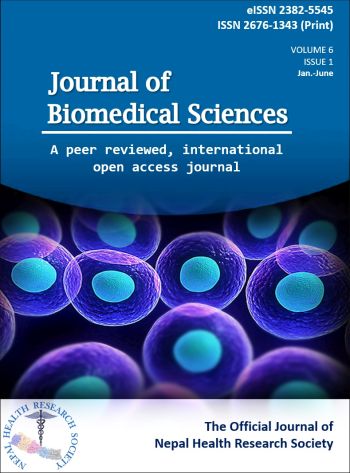亨廷顿症 zQ175DN 小鼠模型脑灌注和血管反应性的纵向变化
IF 9
2区 医学
Q1 CELL BIOLOGY
引用次数: 0
摘要
亨廷顿氏病(Huntington's disease,HD)的特征是亨廷丁基因中的 CAG 重复扩增,导致神经元功能障碍和丧失,主要影响纹状体和大脑皮层。在包括 HD 在内的多种神经系统疾病中,神经血管耦合系统的改变已被证明会导致脑区能量供应失调,从而有可能引发神经变性过程。特别是,在横断面人类 HD 研究中观察到,血管改变与脑血流(CBF)受损有关。为了评估 CBF 的全脑变化是否存在并遵循进展模式,我们在 zQ175DN HD 小鼠模型中对静息态脑灌注和血管反应性进行了纵向研究。利用伪连续动脉自旋标记(pCASL)核磁共振成像技术,我们对zQ175DN HD模型小鼠和年龄匹配的野生型(WT)小鼠在3、6、9和13个月大时的全脑静息态灌注进行了评估,并在4.5、6、9和15个月大时评估了高碳酸血症诱发的脑血管反应性(CVR)。我们发现,zQ175DN HET 小鼠在 3 个月大时皮质区域的灌注量增加,在 6 个月大和 9 个月大时这种异常有所减少,而在这两个月大时已有行为缺陷的报道。另一方面,在高碳酸血症条件下,zQ175DN HET 小鼠的 CBF 与 WT 小鼠相比有所降低:6 个月大时多个脑区的 CBF 降低,9 个月大时仅体感皮层和回脾皮层的 CBF 降低,15 个月大时整个大脑的 CBF 降低。9 个月大时,zQ175DN HET 小鼠皮质区域、丘脑和丘脑球部的 CVR 受损,15 个月大时整个大脑的反应性减弱。有趣的是,3 个月大时,运动皮层的血管密度增加,而 6 个月大时,尾状核丘脑外侧部分的平均血管长度减少。我们的研究结果揭示了早期皮质静息态高灌注和CVR受损的年龄段,这在HD模型中表现为运动异常,这表明有必要进一步确定动物模型脑灌注改变的特征,并将其作为HD的潜在治疗靶点。本文章由计算机程序翻译,如有差异,请以英文原文为准。
Longitudinal alterations in brain perfusion and vascular reactivity in the zQ175DN mouse model of Huntington’s disease
Huntington’s disease (HD) is marked by a CAG-repeat expansion in the huntingtin gene that causes neuronal dysfunction and loss, affecting mainly the striatum and the cortex. Alterations in the neurovascular coupling system have been shown to lead to dysregulated energy supply to brain regions in several neurological diseases, including HD, which could potentially trigger the process of neurodegeneration. In particular, it has been observed in cross-sectional human HD studies that vascular alterations are associated to impaired cerebral blood flow (CBF). To assess whether whole-brain changes in CBF are present and follow a pattern of progression, we investigated both resting-state brain perfusion and vascular reactivity longitudinally in the zQ175DN mouse model of HD. Using pseudo-continuous arterial spin labelling (pCASL) MRI in the zQ175DN model of HD and age-matched wild-type (WT) mice, we assessed whole-brain, resting-state perfusion at 3, 6 and 9 and 13 months of age, and assessed hypercapnia-induced cerebrovascular reactivity (CVR), at 4.5, 6, 9 and 15 months of age. We found increased perfusion in cortical regions of zQ175DN HET mice at 3 months of age, and a reduction of this anomaly at 6 and 9 months, ages at which behavioural deficits have been reported. On the other hand, under hypercapnia, CBF was reduced in zQ175DN HET mice as compared to the WT: for multiple brain regions at 6 months of age, for only somatosensory and retrosplenial cortices at 9 months of age, and brain-wide by 15 months. CVR impairments in cortical regions, the thalamus and globus pallidus were observed in zQ175DN HET mice at 9 months, with whole brain reactivity diminished at 15 months of age. Interestingly, blood vessel density was increased in the motor cortex at 3 months, while average vessel length was reduced in the lateral portion of the caudate putamen at 6 months of age. Our findings reveal early cortical resting-state hyperperfusion and impaired CVR at ages that present motor anomalies in this HD model, suggesting that further characterization of brain perfusion alterations in animal models is warranted as a potential therapeutic target in HD.
求助全文
通过发布文献求助,成功后即可免费获取论文全文。
去求助
来源期刊

Journal of Biomedical Science
医学-医学:研究与实验
CiteScore
18.50
自引率
0.90%
发文量
95
审稿时长
1 months
期刊介绍:
The Journal of Biomedical Science is an open access, peer-reviewed journal that focuses on fundamental and molecular aspects of basic medical sciences. It emphasizes molecular studies of biomedical problems and mechanisms. The National Science and Technology Council (NSTC), Taiwan supports the journal and covers the publication costs for accepted articles. The journal aims to provide an international platform for interdisciplinary discussions and contribute to the advancement of medicine. It benefits both readers and authors by accelerating the dissemination of research information and providing maximum access to scholarly communication. All articles published in the Journal of Biomedical Science are included in various databases such as Biological Abstracts, BIOSIS, CABI, CAS, Citebase, Current contents, DOAJ, Embase, EmBiology, and Global Health, among others.
 求助内容:
求助内容: 应助结果提醒方式:
应助结果提醒方式:


